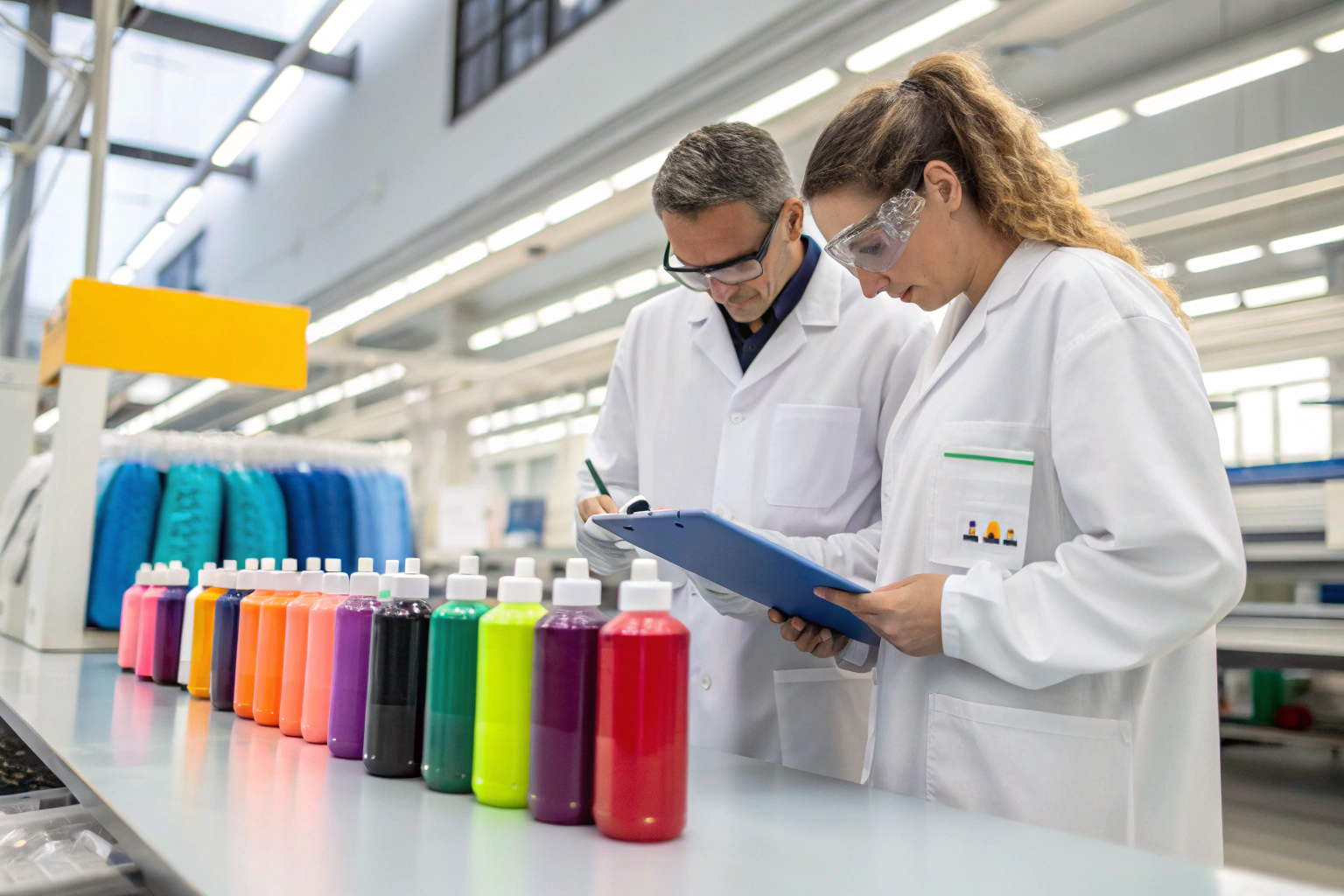As a fabric supplier working with global sportswear brands, I frequently encounter this crucial question. Your activewear collection shows strong market performance, but then comes customer feedback about skin irritation or color fading after exercise sessions. The issue typically isn't the design itself, but rather the fabric's limited resistance to acidic or alkaline perspiration. This colorfastness deficiency often results in dissatisfied customers and significant return costs.
The solution requires an integrated strategy combining smart dye selection, comprehensive fabric testing, and specialized chemical treatments. This isn't about a single quick fix, but rather a coordinated approach spanning from raw fiber selection to finished fabric production. By optimizing these elements, you can guarantee that your activewear maintains its visual appeal and safety standards, even during intense physical activity, thereby safeguarding your brand's market position.
Let me guide you through the specific methods that transform this common challenge into a solved problem for your manufacturing process.
What is colorfastness to perspiration and why is it important?
When consumers choose your activewear, they expect both aesthetic appeal and functional reliability. Colorfastness to perspiration refers to a fabric's ability to maintain its original color when exposed to human sweat. Perspiration is chemically complex, containing water, minerals, and organic compounds, with varying pH levels from acidic to alkaline. When dye bonds aren't sufficiently stable, these sweat components function as chemical agents that can cause color deterioration or, more seriously, transfer to the wearer's skin.
This characteristic is vital because it directly impacts both product quality and consumer safety. Fabric that performs poorly in this aspect can lead to skin discomfort, allergic responses, and ultimately, customer disappointment. In today's highly competitive market where online reviews significantly influence purchasing decisions, even one production batch with inadequate colorfastness can compromise the brand reputation you've carefully built. This extends beyond mere color retention—it's about fulfilling your commitment to delivering trustworthy, high-performance products.
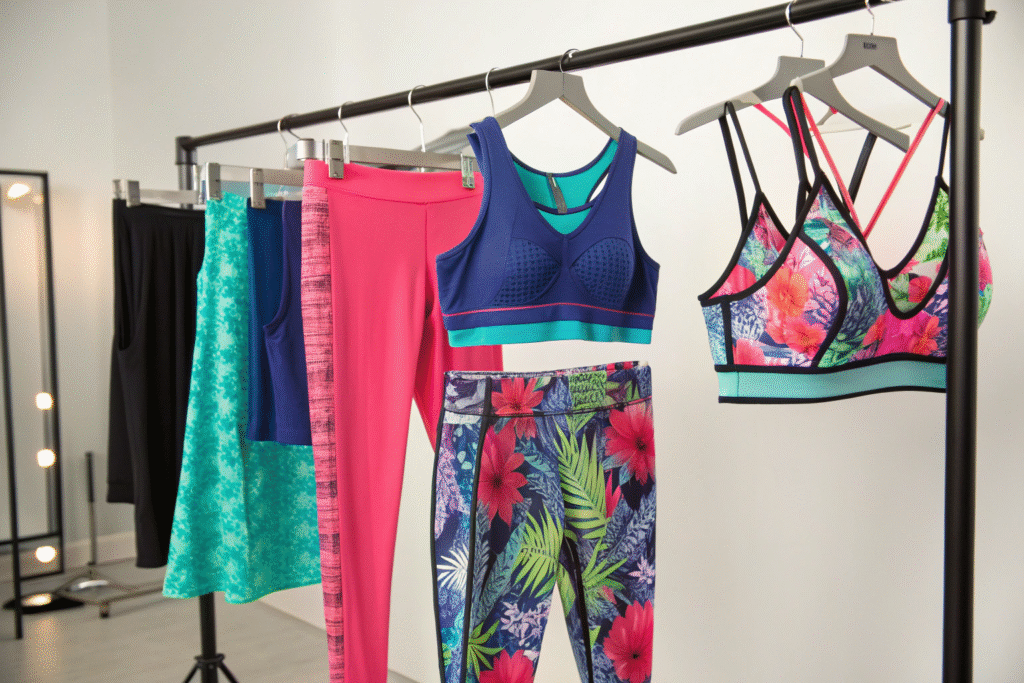
How does human sweat interact with fabric dyes?
Human perspiration acts as a natural chemical agent. The pH balance plays a decisive role. Alkaline sweat conditions can degrade specific dye structures, resulting in color fading. Acidic sweat environments may cause dye migration from the fabric to the skin surface. This is particularly relevant for reactive dyes and direct dyes applied to plant-based fibers like cotton and bamboo. The mineral salts present in sweat accelerate these chemical reactions. The visible outcome is either color loss or unwanted staining that shouldn't occur in quality-controlled activewear.
What standardized tests measure perspiration resistance?
The global textile industry employs established testing protocols to verify quality performance. The most widely recognized methods include AATCC 15 and ISO 105-E04. These laboratory procedures replicate the impact of both acidic and alkaline perspiration on textile materials. In our certified laboratory facility, we subject fabric samples to artificial perspiration solutions under controlled conditions using specialized equipment. Following controlled drying processes, we employ standardized color assessment tools to measure any color alteration or transfer. Superior test ratings indicate that your fabric will maintain its performance in actual use conditions.
How does fiber and dye selection impact color durability?
The fundamental choices you make at the material selection stage determine the baseline performance of your finished product. Selecting the optimal combination of fiber type and dye chemistry represents the most effective approach to building inherent colorfastness properties. Different fiber types interact differently with dye substances, and selecting incompatible dye categories remains a primary cause of colorfastness failures in activewear applications.
For manufactured fibers like polyester and nylon—cornerstone materials in activewear production—disperse dyes represent the industry standard. These dye types exhibit lower water solubility and achieve deeper fiber penetration, delivering superior fastness characteristics. However, their application demands precise control of temperature and pressure parameters during the dyeing process to ensure complete dye diffusion into the polymer structure. For natural fiber options, the technical requirements differ significantly. Cotton and bamboo materials typically require reactive dyes that establish molecular bonds with the fiber substrate. While these bonds demonstrate considerable strength, they can become vulnerable when exposed to the pH variations characteristic of human perspiration if not properly managed.
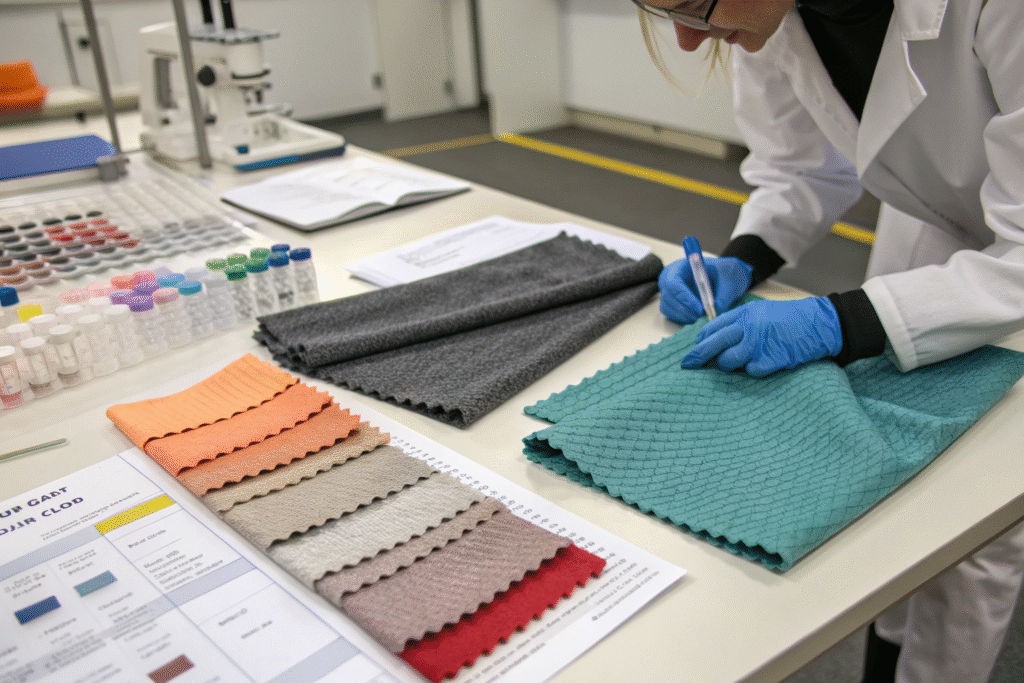
What advantages do fiber-reactive dyes offer?
For plant-derived fibers, fiber-reactive dyes represent the premium choice. Rather than merely coating the fiber surface, they establish durable, permanent chemical connections. This covalent bonding mechanism integrates the colorant directly into the fiber's molecular structure, rather than creating a superficial coating. This fundamental integration provides substantially improved resistance to both laundering and perspiration exposure compared to direct dye alternatives. The critical success factors involve maintaining exact pH control throughout the dyeing process and utilizing appropriate chemical assistants to ensure maximum dye transfer from the bath to the fiber substrate, thereby minimizing residual loose dye that could subsequently migrate.
Are synthetic fibers inherently better for color retention?
In numerous applications, the answer is affirmative. This explains why advanced activewear collections predominantly utilize polyester and nylon materials. These manufactured fibers demonstrate naturally higher resistance to the chemical components present in perspiration. Their molecular architecture features reduced porosity compared to cotton, creating a more effective barrier against sweat component penetration and subsequent dye displacement. When you combine these technically advanced fibers with appropriate disperse dye systems and optimized finishing protocols, you achieve colorfastness performance levels that are challenging to replicate using natural fiber alternatives.
What chemical treatments enhance perspiration resistance?
Following the dyeing phase, the fabric enters the crucial finishing stage. This is where color retention is secured through protective mechanisms. Properly executed finishing procedures can substantially improve the colorfastness characteristics of even the most challenging color formulations.
The primary objective involves eliminating any unbound or chemically compromised dye remaining on the textile material after the dyeing cycle. This mobile dye fraction represents the main source of color bleeding issues. A comprehensive cleaning and rinsing sequence is absolutely essential. Following this purification stage, applying specialized fixing compounds becomes critical. These chemical agents function either by creating an invisible protective barrier around individual fibers, effectively trapping dye molecules within, or by chemically modifying the dye substances to create larger complexes that cannot escape the fiber structure.
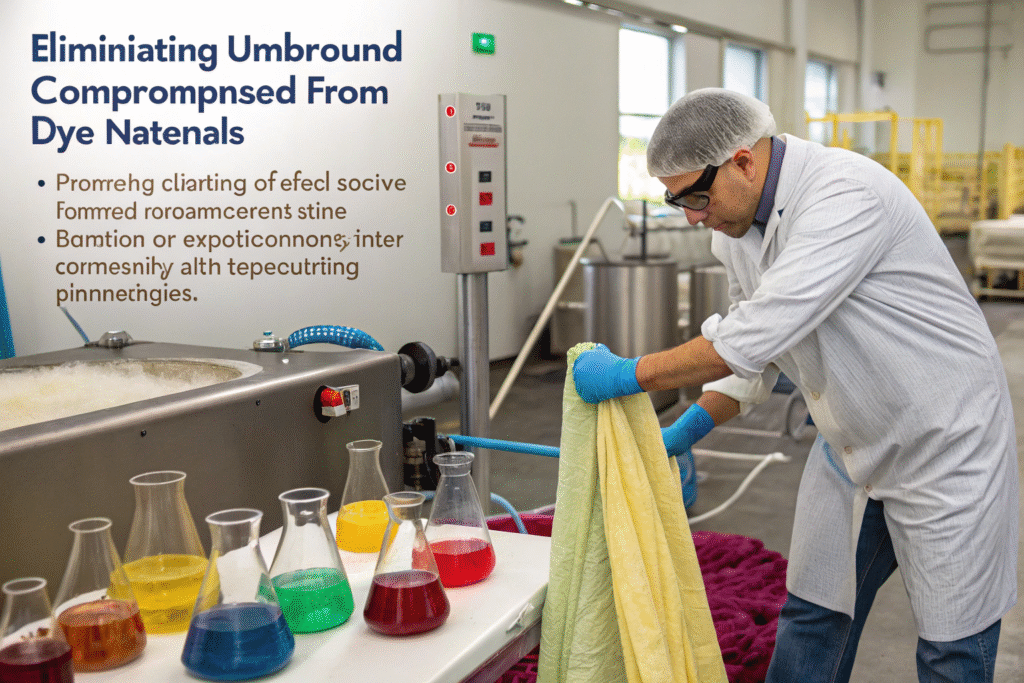
How does post-dyeing purification work?
This stage constitutes an intensive cleaning process for the dyed fabric. After completing the dye application cycle, the material undergoes sequential rinsing followed by treatment with specialized cleaning agents in elevated temperature conditions. This procedure creates mechanical action that physically dislodges and removes dye particles that failed to establish proper bonds with the fiber substrates. The effectiveness of this cleaning stage is paramount. Within our partner dyeing facilities, we implement multi-phase washing systems that systematically eliminate these unstable dyes, ensuring the fabric progresses to the finishing stage in an optimally prepared condition. Compromising this essential step represents a frequent but ultimately costly production error.
How do fixing agents prevent color migration?
Cationic fixing agents serve as essential components for colorfastness enhancement, particularly for direct and reactive dyes applied to cotton substrates. These chemical compounds carry positive electrical charges. Since most dye molecules possess negative charges, the fixing agents attract and chemically bond with any unstable dye particles. They either encapsulate these dye molecules or generate substantial, water-insoluble complexes that remain trapped within the fiber matrix. This chemical stabilization process provides effective protection against the color leaching typically induced by perspiration exposure. It constitutes a final, vital protective layer that produces measurable improvements in standardized test results.
How does verification ensure consistent quality?
Even with optimal materials and refined processes, without systematic verification, quality assurance remains incomplete. Methodical quality control provides the framework that guarantees every textile shipment meets established specifications. It represents your ultimate validation checkpoint before materials reach your distribution channels.
Our verification process initiates at the raw material procurement phase and continues throughout all manufacturing stages. For colorfastness assurance, the cornerstone of our quality system is our internally maintained, certified testing laboratory. Here, we don't assume process reliability—we objectively confirm it. We recreate the demanding conditions your activewear will encounter using internationally recognized testing standards. This proactive methodology enables us to identify potential concerns before they escalate into bulk production complications, providing both you and your customers with complete confidence in product performance.
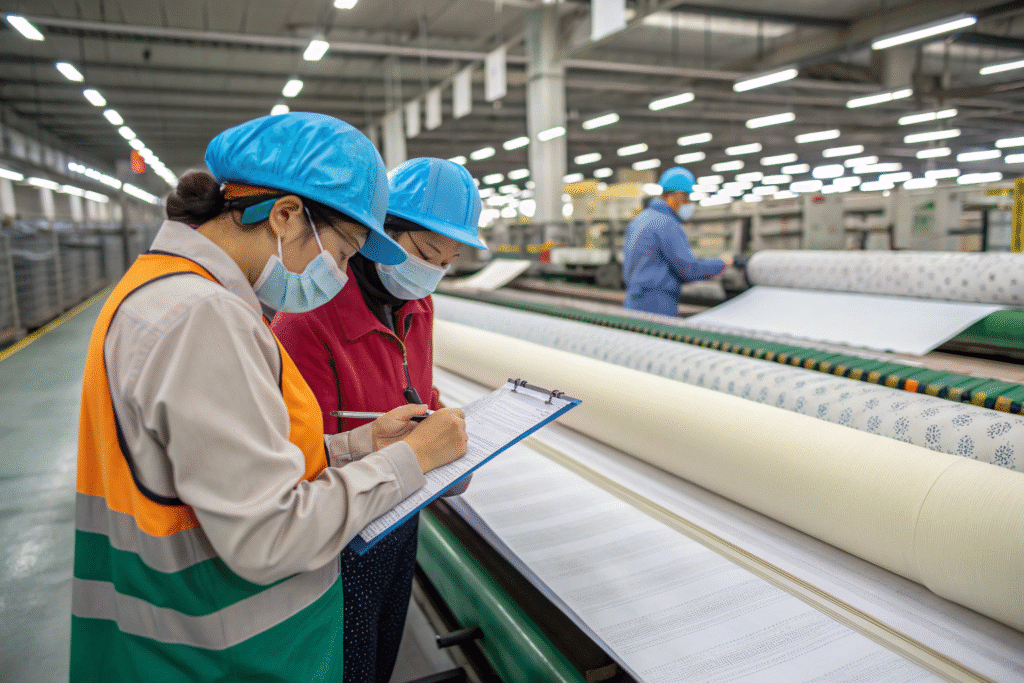
Why is laboratory certification important?
A certified testing facility operates according to internationally accepted standards of technical competence and operational impartiality. This certification ensures our test data maintains consistent reliability and global acceptance. For your business, this translates to measurable risk reduction. When we evaluate fabric samples for perspiration colorfastness following AATCC 15 protocols, you receive comprehensive documentation. This report details specific color change measurements and staining assessment results. This objective performance data provides verified assurance that the fabric will fulfill its intended function during actual use. Furthermore, this certification often represents a mandatory requirement for supplying major retail brands that maintain rigorous compliance standards.
How does production tracking support quality management?
We incorporate digital monitoring systems to ensure complete supply chain transparency. Our advanced production tracking technology enables you to access specific test results for your individual fabric production batches. Through simple code scanning, you can review detailed fabric specifications, dimensional stability data, and colorfastness performance ratings. This system extends beyond basic data storage—it provides real-time quality verification. You can confidently communicate this information to your own customers, demonstrating a systematic commitment to quality and safety that differentiates your brand in competitive market environments.
Conclusion
Achieving reliable colorfastness to perspiration represents an achievable technical objective rather than an unsolvable mystery. It requires a scientifically grounded methodology that integrates appropriate dye and fiber selection, systematic application of finishing technologies, and rigorous quality verification. From selecting reactive dyes for cotton substrates to utilizing the inherent advantages of polyester materials, and from applying chemical fixing agents to validating performance in certified testing facilities, each manufacturing phase contributes essentially to creating durable, safe, and visually consistent activewear. This comprehensive approach ensures that the colors you conceptualize remain the colors your customers experience throughout the product lifecycle.
If you require a dependable manufacturing partner to develop high-performance activewear textiles that withstand perspiration and intensive use conditions, we should connect. Our integrated production capabilities and technical expertise are available to support your requirements. For detailed discussions regarding your upcoming production program, please contact our Business Director, Elaine, by email at: elaine@fumaoclothing.com. We are prepared to assist you in transforming quality textiles into successful apparel collections.

